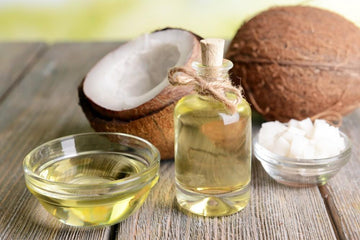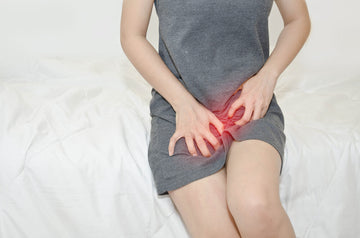Breast pain, also known as mastalgia, is a common symptom experienced by many women during their menstrual cycle. It typically occurs in the days leading up to your period and is often linked to hormonal changes. This discomfort can range from mild tenderness to severe pain, making it difficult for some women to do their daily activities. The pain is often caused by the hormonal fluctuations that occur during the menstrual cycle, particularly an increase in estrogen and progesterone. While breast pain during periods is usually temporary and harmless, there are simple and effective ways to manage it. In this guide, we’ll explore practical tips to alleviate breast pain and improve comfort.
Breast Pain and the Period
Breast pain associated with the menstrual cycle is called Cyclic Mastalgia. Cyclic Mastalgia may be a part of the group of symptoms that cause premenstrual syndrome (PMS), or it can be a sign of Fibrocystic Breast disease. Fibrocystic breast disease is a condition in which women may experience pain and lumpy breasts during their periods. These lumps are usually non-cancerous and disappear once the period ends.
We always think that any discomfort or pain in our breasts is a sign of Breast Cancer. But it is not valid. Breast pains are more often related to the menstrual cycle and very rarely associated with breast cancer.
Symptoms of Cyclic Mastalgia
The pain may be felt in one or both breasts. Some women experience radiating feeling in the underarm area. The swelling or pain will begin in the luteal(ovulation) phase of the menstrual cycle or on the first day of the period and gradually fade away before the end of the period. Cyclic Mastalgia always occurs at the same time of each menstrual cycle and with certain symptoms. The aching may range from slight discomfort to severely disabling pain in some women.
Causes of Breast Pain During Periods
The several factors that cause breast pain during periods are as follows:
Hormonal Changes
Before menstruation, the body experiences an upward push in estrogen and progesterone stages, which makes the body ready for a possible pregnancy. These hormonal imbalances cause the breast tissue to swell, making the breasts feel fuller and more sensitive. This increased sensitivity can lead to soreness or aches, particularly within the days of your duration.
Fluid Retention
Hormonal shifts earlier than your period can also trigger fluid retention at some point in the frame, which includes the breasts. The elevated fluid causes the breasts to extend and experience swelling. This swelling can cause a heavy or gentle sensation, making your breasts extra touchy to touch and probably uncomfortable for the duration of movement or while sporting tight apparel.
Fibrocystic Breasts
Many women have fibrocystic breasts, in which benign lumps or cysts form in the breast tissue. These lumps are generally non-cancerous, but they can become more prominent and tender before or during menstruation because of hormonal fluctuations. The exchange in hormonal stages makes the cysts extra fluid-filled and may cause discomfort within the breasts.
Increased Blood Flow
During the menstrual cycle, blood flow to the breasts increases in response to hormonal modifications. This heightened blood flow can cause the breast tissue to become extra sensitive and engorged. As a result, even mild pressure or touch can feel uncomfortable, and this sensitivity may persist at some point in the premenstrual period.
Pregnancy
If being pregnant takes place, hormonal changes, much like those visible before menstruation,n also can result in breast tenderness. The boom in hormones, together with estrogen and progesterone in the course of early pregnancy, prepares the breasts for breastfeeding, inflicting them to swell and grow to be sore. This tenderness can sometimes feel similar to premenstrual breast pain; however, it can also last longer and can be more pronounced.
Remedies to Reduce Breast Pain
Following are some of the recommendations you can try on your own to prevent and alleviate breast pain during your menstruation:
Try Using A Support Bra
You won’t believe that most women wear bras of the wrong size. Choose a well-fitting support bra with a soft cup. This reduces bouncing and swaying, which, in turn, decreases the pain. Never push your swollen breasts in your usual bra. Your usual bra might be very tight and uncomfortable for your aching breasts.
Think About Camisoles
Women with small breasts may feel good without a bra. They can consider camisoles that provide support without the restraint of a bra. A sports bra might also be a good option for them to find comfort in their breasts.
Say No To Caffeine
There aren’t many explanations for this theory, but many women say that reducing the caffeine intake in their daily lives has made a big difference. Caffeine is not only present in coffee, tea, and soft drinks but also in chocolates. (I can hear you cry!)
Relieve Yourself With Hot or Cold Packs
Apply a hot or cold pack to your breast skin using a towel or soft cloth. Do this for only fifteen to twenty minutes at a time. If you continue to experience discomfort, repeat the procedure. This will help alleviate sore breasts and tenderness.
Include Nutrient-Rich Diet
Reduce your intake of meat and rice and opt for a variety of nutrient-abundant foods, such as peanuts, spinach, corn/olive oil, carrots, bananas, and other healthy whole grains. Avoid alcohol and reduce salt to reduce water retention.
Take Vitamin or Herb Supplements
Some doctors may prescribe supplements like Vitamin E, Vitamin B6, or evening primrose oil for Cyclic Mastalgia. There is no scientific evidence for this remedy, so discuss your allergies or other health-related problems to prevent any side effects.
Relax And Do Not Worry
Stress can always boost your pain. Try reducing your stress levels by doing meditation, yoga, or gentle exercises. Getting soaked in a hot tub can sometimes make you feel relaxed.
When to Consult A Doctor?
While the sore and tender breasts caused by Cyclic Mastalgia are not worrisome and harmful, contact your physician if you have any of the following abnormal conditions:
i). If you notice any new or unusual lumps in your breasts or underarm.
ii). Strange, bad-smelling brown or bloody discharge from your nipples.
iii). If your pain is so severe, you cannot concentrate on your daily routine.
iv). When you find lumps in only one of the breasts.
v). Signs of infection such as redness, itching, or fever.
Doctors will do a physical breast examination and prescribe some medications for your Cyclic Mastalgia. In case of abnormalities, they can also conduct a mammogram, ultrasound, or MRI to detect cancerous lumps.
Conclusion
Breast pain during periods, also known as cyclic mastalgia, is a common concern caused by hormonal fluctuations, fluid retention, and increased sensitivity. While it usually subsides independently, simple management strategies can provide relief. Wearing a supportive bra, maintaining a balanced diet low in caffeine and salt, staying hydrated, and applying warm or cold compresses can help ease discomfort. Gentle exercises, stress management, and herbal remedies may also be beneficial. Consulting a healthcare provider is essential if the pain is severe, persistent, or affects daily activities. Understanding your body and adopting healthy lifestyle choices can help manage breast pain effectively and improve overall menstrual well-being.





